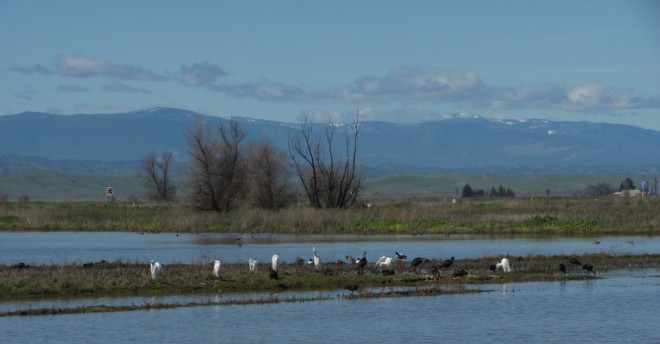
Sacramento National Wildlife Refuge, March 8, 2017: Snowy Egrets and Glossy Ibises. Photo by Barb Gorges
Published April 30, 2017, in the Wyoming Tribune Eagle, “Coast comes through with great birds”
By Barb Gorges
If I added these bird species to my life list last month [March], where would you say I’d been?
Surf scoter, pelagic cormorant, western gull, band-tailed pigeon, Anna’s hummingbird, Allen’s hummingbird, Nuttall’s woodpecker, California (formerly western) scrub-jay, California towhee, golden-crowned sparrow.
If you guessed California, you would be right. But it isn’t the birds with “California” in their names that is the best clue. That would be the Nuttall’s woodpecker, found entirely in the state and the northern tip of Baja California. We saw ours in the arboretum at the University of California Davis.
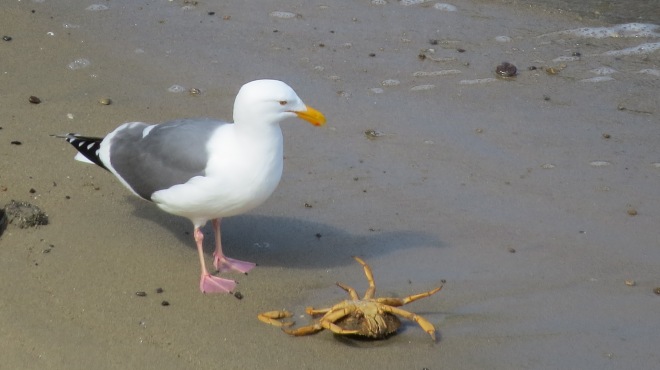
Western Gull, Point Reyes National Seashore. Photo by Mark Gorges.
Five of the species new to me—the hummingbirds, pigeon, towhee and scrub-jay—were in the backyard of the bed and breakfast we stayed at in Olema, California. The host fills the feeders every morning at 8:15 a.m. just before serving breakfast and his guests are treated to a flurry that also includes numerous California quail, white-crowned sparrows and, just like home, Eurasian collared-doves.

California Quail surveys feeding station at the B & B in Olema, California. Photo by Mark Gorges.
The pelagic cormorant would tell you that we spent time at the ocean. Despite the “pelagic” part of its name, which should indicate it is found far offshore, this cormorant is a shore dweller. Mark and I saw it way below us, in the rocks, at the lighthouse at Point Reyes National Seashore.
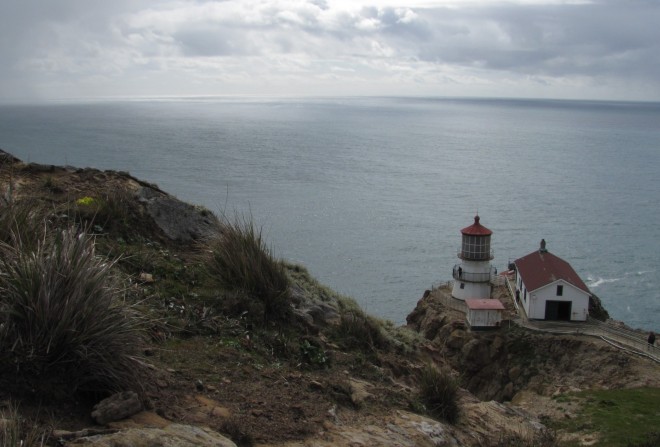
Point Reyes National Seashore Lighthouse, March 6, 2017. Photo by Barb Gorges.
At Point Reyes Beach North, we encountered signs warning us about the protected nesting area for the federally designated threatened western population of snowy plovers. The area of the beach to be avoided was clearly marked with 4-foot white poles and white rope. Mark and I, and our Sacramento friends, formerly of Casper, dutifully gave it a wide berth.
And then the birds flew up in front of us anyway. We watched as five or six of the little white-faced sand-colored shorebirds fluttered away and settled down again nearby—in human footprint depressions.
Snowy Plover close-up by Mark Gorges, and camouflaged on the beach by Barb Gorges.
The American Birding Association’s “Field Guide to the Birds of California” says that the snowy plovers breeding on beaches like to find depressions so they don’t cast as much of a shadow to avoid detection by predators. They like the depressions for nesting too. Makes me think someone should walk once or twice through the official nesting area to make some, but who wants to pay the fine for trespassing? Besides, human activity and loose dogs scare the birds and prevent them from breeding.
Snowy plover was not a lifer for us—our first ones were at Caladesi Island State Park, Florida [managed at the time by Bill Gruber, former Wyoming Tribune Eagle Outdoors editor]. There too, their nesting area was delineated and protected, though in Florida they are only on the state-level threatened species list.
Snowy plovers are more than oceanic beach birds. You might find nesting populations across the southwestern U.S. at shallow lakes with sand or dried mud.
One bird I wanted to see was the wrentit. California, western Oregon and northern Baja California are the only places to see it. At the Sacramento National Wildlife Refuge, I found two cute little birds that seemed to match the field guide. Another visitor noticed them popping in and out of a two-foot-long hanging sack made of bits of vegetation woven together and a red flag went up in my mind.
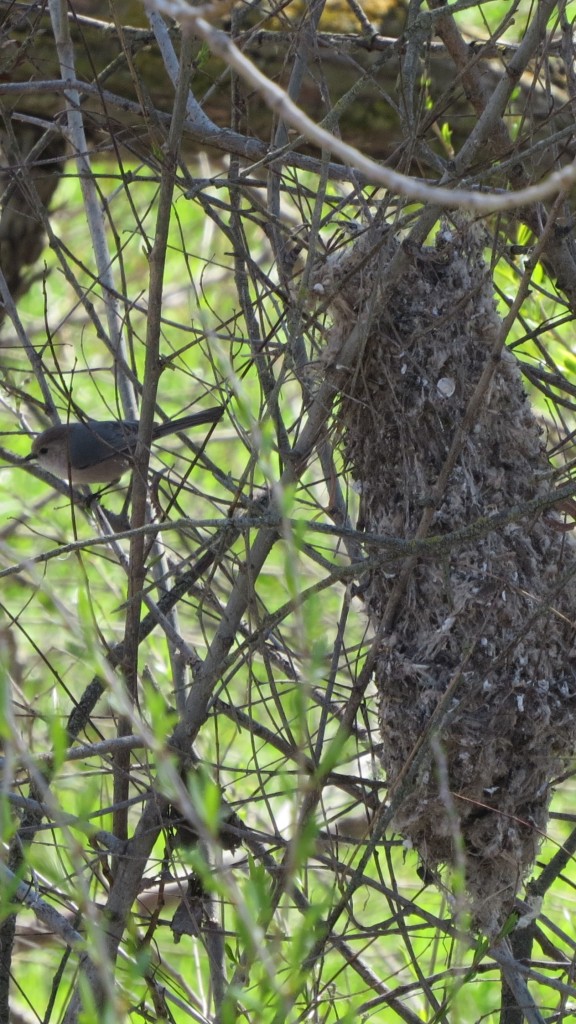
Bushtit and nest, Sacramento NWR. Photo by Mark Gorges.
Didn’t this hanging nest remind me of one I’d seen before in Seattle? Made by bushtits? Well darn, those were bushtits. They are only 4.5 inches long, whereas wrentits are 6.5 inches long, and wrentits build cup-shaped nests instead. If you were to draw a line from Seattle to Houston, bushtits can be found south of it, anywhere brushy and woodsy.
This was our first trip to California as eBirders, recording birds we saw at eBird.org. As usual, it came about as the result of a family commitment, which almost all our traveling does. We might have seen more species had we been on a birding tour, like we’ve done in Texas and Florida, but I think we did well at 86 species. The birds just seemed to pop out and give us a good look. Or maybe you could say they took a good look at us. [Have you ever been scrutinized by three turkey vultures on three adjoining fence posts next to a trail?]
We’ll have to make a point of visiting our family and friends in California more often. There are 571 bird species left to see—and half would be life birds.
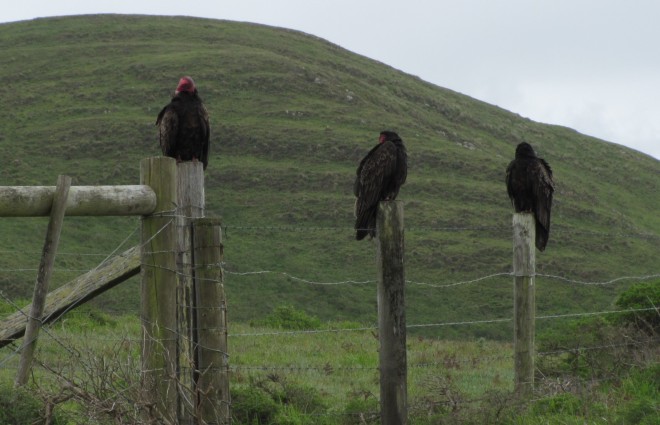
Turkey Vultures roost next to a trail at Point Reyes National Seashore. Photo by Barb Gorges.


